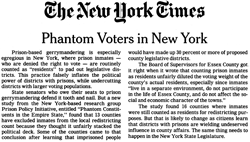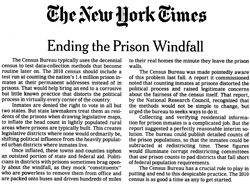Senator Schneiderman and other elected officials announce national letter-writing campaign to urge Census Bureau policy change on prison population count.
October 18, 2007
Announce National Letter-Writing Campaign to Urge Policy Change
For Immediate Release:
October 18, 2007
Contact: Michael Meade 646-522-8601
Peter Wagner (413) 527-0845
Today, State Senator Eric Schneiderman, Peter Wagner, Executive Director of the Prison Policy Initiative, State Senators Eric Adams and Liz Krueger, Assemblymembers Adriano Espaillat, Micah Kellner, Keith Wright and Adam Clayton Powell, Council Members Robert Jackson, Miguel Martinez, and Melissa Mark Viverito and criminal justice and democracy advocates called on the United States Census Bureau to begin counting prisoners in their home communities, rather than where they are incarcerated. Elected officials and advocates also announced the beginning of a national letter-writing campaign by local elected officials in New York and around the country to urge a change in this policy.
Continue reading →
 Prison-based gerrymandering is especially egregious in New York, where prison inmates — who are denied the right to vote — are routinely counted as “residents” to pad out legislative districts. This practice falsely inflates the political power of districts with prisons, while undercutting districts with larger voting populations.
Prison-based gerrymandering is especially egregious in New York, where prison inmates — who are denied the right to vote — are routinely counted as “residents” to pad out legislative districts. This practice falsely inflates the political power of districts with prisons, while undercutting districts with larger voting populations.




